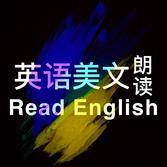第一章 单元测试
文章目录[隐藏目录]
- 第一章 单元测试
- 第二章 单元测试
- 第三章 单元测试
- 第四章 单元测试
- 第五章 单元测试
- 第六章 单元测试
- 第七章 单元测试
- 第八章 单元测试
- 第九章 单元测试
- 第十章 单元测试
- 第十一章 单元测试
- 第十二章 单元测试
- 第十三章 单元测试
1、单选题:
In the essence, the translator is _____
选项:
A:a writer
B:a communicator
C:a language worker
D:a creator
答案: 【a communicator】
2、单选题:
The translation of “风入松”is a classical one. Which of the following is not the reason why it is classic?
选项:
A:Because its artistic conception is translated.
B:Because it is well transliterated.
C:Because the image is translated.
D:Because the sound retained.
答案: 【Because it is well transliterated.】
3、单选题:
We can understand meaning from many dimensions except____.
选项:
A:semantic
B:word-forming
C:pragmatic
D:stylistic
答案: 【word-forming】
4、单选题:
In connection with the intended function of the target text, the translator’s choices are constrained at the same time by ______.
选项:
A:the nature of the translation itself
B:the nature of the original readership
C:the translator’s translating ability
D:the nature of the target readership
答案: 【the nature of the target readership】
5、单选题:
Of the translator’s four translation competences, _______ is considered the core one.
选项:
A:bilingualcompetence
B:biculturalcompetence
C:transfer competence
D:Subject competence
答案: 【transfer competence】
第二章 单元测试
1、单选题:
Which of the following statements about free translation is not true?
选项:
A:Free translation is closer to the target language and target readers
B:Free translation maintains boththe content and the form of the original
C:Free translation aims to producea naturally reading target text
D:Free translation is also calledliberal translation
答案: 【Free translation maintains boththe content and the form of the original】
2、单选题:
Which of the following words is from foreignization?
选项:
A:dragon
B:tofu
C:dumpling
D:bean curd
答案: 【tofu】
3、单选题:
English makes use of( ) to form different words.
选项:
A:consonants and vowels
B:intonation
C:tone
答案: 【consonants and vowels】
4、单选题:
What is the sound pattern used in “pride and prejudice”?
选项:
A:Alliteration
B:Rhyme
C:Assonance
答案: 【Alliteration】
5、单选题:
Which of the following statements is true about the Chinese language?
选项:
A:Chinese sentences cannot do without subjects.
B:Subject in Chinese is optional.
C:Chinese sentences have no subjects.
答案: 【Subject in Chinese is optional.】
6、单选题:
Which of the following statements is true about the Chinese writing system?
选项:
A:The Chinese writing system represents primarily the meaning, and sometimes secondarily the sound.
B:The Chinese writing system does not represent sound.
C:The Chinese writing system represents primarily the sound.
答案: 【The Chinese writing system represents primarily the meaning, and sometimes secondarily the sound.】
推荐一个非常好用的查题公众号:丹丹查题
查题方法:发送题目就可返回答案
无法复制题目的,可以输入题目中连续的几个字
























热门跟贴